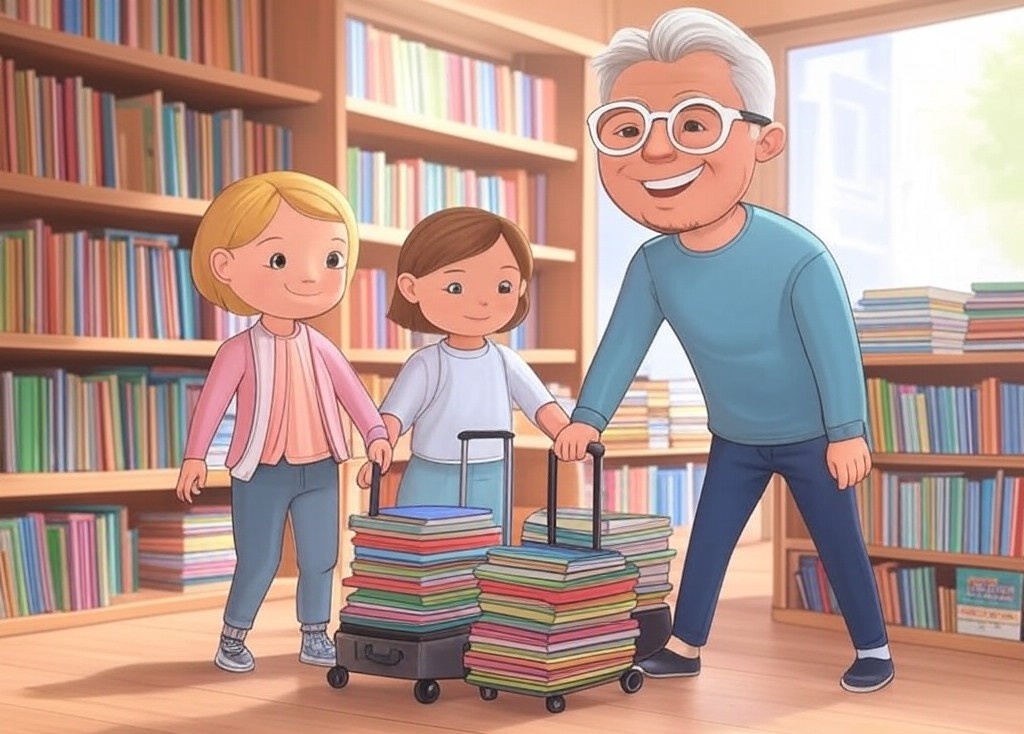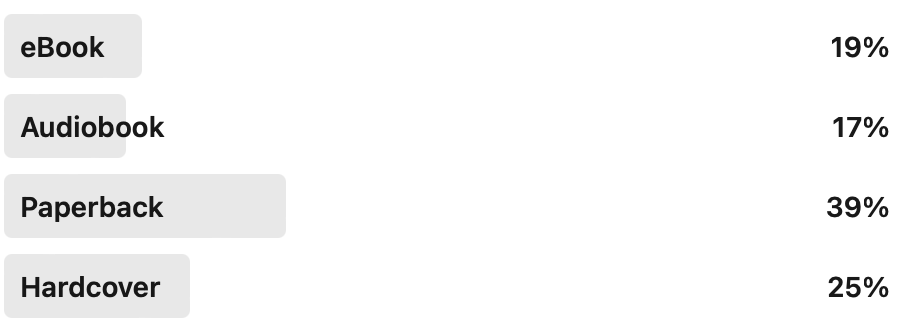
My kids have tablets and e-readers. Yet they strongly prefer printed books.
They’re not alone.
Print book sales keep rising, even as digital options multiply.
When my girls were toddlers, I’d take them to the library and we’d wheel home the maximum 100 picture books allowed, which we’d enjoy as a family. We did that every three weeks, like clockwork, for years.
The children’s section librarian told me recently she well remembers our book-hauling adventures. Guess it wasn’t very “normal.”
But the preference towards real books definitely IS.
What is it about physical books that keeps readers coming back?
I’ve written a lot about how the dog brain connects with sensory experiences while the tank brain evaluates practicality. E-books should dominate the practical battle — they’re cheaper, instant, searchable, weightless, and take zero shelf space.
But they’re missing something humans value hugely: the full sensory experience.
- The smell of fresh printed pages
- The satisfying weight
- The tactile page turns
- The visual progress of page thickness (and ability to dog-ear corners)
- The lasting trophy on your shelf
The logistics behind this enduring love affair can become staggering in extreme cases. Take Harry Potter and the Deathly Hallows’ launch in 2007:
- 12,000,000 first-run copies
- Printed in absolute secrecy
- Shipped to 90+ countries
- Coordinated global release time
- Arrived at thousands of stores simultaneously (Talk about wizardry!)
Publishers had to:
- Reserve entire printing facilities
- Hire extra security (for a young readers’ book launch!)
- Charter special flights
- Coordinate with customs globally
- Time deliveries perfectly
ALL for a product many said would be obsolete years before!
I’ve seen this preference for print with my own book. I Need That is available in all formats – ebook, audiobook, hardcover, and paperback. Despite having the lowest price point and instant availability, ebook sales trail behind paperback and hardcover.
A LinkedIn survey I did came up with similar results:

It seems most readers still want something they can hold, mark up, and then display in their home. (Of course I’m hugely appreciative of my ebook readers and the audiobook listeners who fit it in during their commutes!)
Action for today: Look at your product’s supposedly “outdated” features. Which ones could actually be secret advantages? What seems old-fashioned MIGHT actually be timeless. Who’d have thought audiophiles would go back to buying vinyl records, to the point new vinyl stores would open where HMVs used to be?
What’s your product’s enduring magic?
Laurier
Product Payoff: Amazon started as an online bookstore because Jeff Bezos specifically chose books for a few smart reasons — they’re easy to ship, hard to damage, and have standardized formats. Another thing about the “old” product is that it can often have evolved to achieve the best logistics.
Bonus Fun Fact: Our younger daughter stormed through all seven Harry Potter books by age 7. Those family book binges seemed to prove effective.
